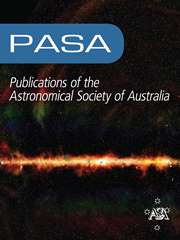No CrossRef data available.
Article contents
Forecast Measurement of the 21 cm Global Spectrum from Lunar Orbit with the Vari-Zeroth-Order Polynomial (VZOP) Method
Published online by Cambridge University Press: 26 March 2025
Abstract
The cosmic 21 cm signal serves as a crucial probe for studying the evolutionary history of the Universe. However, detecting the 21 cm signal poses significant challenges due to its extremely faint nature. To mitigate the interference from the Earth’s radio frequency interference (RFI), the ground and the ionospheric effects, the Discovering the Sky at the Longest Wavelength (DSL) project will deploy a constellation of satellites in Lunar orbit, with its high-frequency daughter satellite tasked with detecting the global 21 cm signal from cosmic dawn and reionization era (CD/EoR).We intend to employ the Vari-Zeroth-Order Polynomial (VZOP) for foreground fitting and subtracting. We have studied the effect of thermal noise, thermal radiation from the Moon, the Lunar reflection, anisotropic frequency-dependent beam, inaccurate antenna beam pattern, and RFI contamination. We discovered that the RFI contamination can significantly affect the fitting process and thus prevent us from detecting the signal. Therefore, experimenting on the far side of the moon is crucial. We also discovered that using VZOP together with DSL, after 1080 orbits around the Moon, which takes about 103 days, we can successfully detect the CD/EoR 21 cm signal.
- Type
- Research Article
- Information
- Creative Commons
- This is an Open Access article, distributed under the terms of the Creative Commons Attribution-NonCommercial-NoDerivatives licence (https://creativecommons.org/licenses/by-nc-nd/4.0/), which permits non-commercial re-use, distribution, and reproduction in any medium, provided the original work is unaltered and is properly cited. Written permission from Cambridge University Press is required for commercial re-use or to create a derivative work.
- Copyright
- © The Author(s), 2025. Published by Cambridge University Press on behalf of Astronomical Society of Australia


